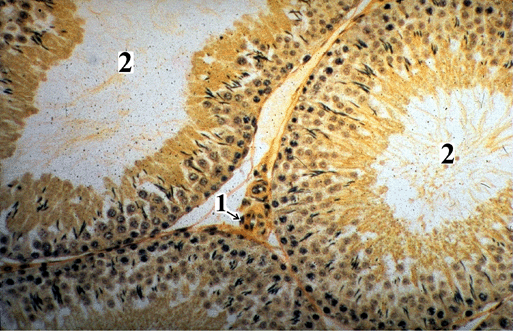PP2.H1.3 +D1 Seminiferous Tubules
Seminiferous Tubules:
- The seminiferous tubules are blind-ended tubules where spermatozoa are produced
- Each seminiferous tubule consists of a complex stratified epithelium surrounding a lumen
- The epithelium sits on a basement membrane
- Outside the basement membrane is a few layers of flattened contractile cells known as myoid cells
- The myoid cells are contractile and provide gentle peristaltic movements which aid in the passage of spermatozoa along the seminiferous tubule
- The epithelium of the seminiferous tubule consist of two populations:
- Spermatogonia and their derivatives
- Spermatogonia are located near to the basement membrane and divide by mitotic division
- Some spermatogonia undergo a process of differentiation, including meiotic division, which gives rise to tadpole like spermatozoa
- As this process progresses the more advances stages become localised adjacent to the lumen of the seminiferous tubules and the formed spermatozoa (after about 64 days in the productive process) are released into the lumen
- Sertoli cells
- These cells are the support cells for spermatogenesis
- They provide protection to the developing spermatozoa as well as nutrients and growth factors to support their production
Micrograph of Seminiferous Tubules:

1 = Leydig cells
2 = Lumen of seminiferous tubule
